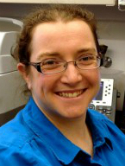Cell-free DNA from nail clippings as source of normal control for genomic studies in hematologic malignancies Journal Article
| Authors: | Krystel-Whittemore, M.; Petrova-Drus, K.; Ptashkin, R. N.; Ewalt, M. D.; Yao, J.; Liu, Y.; Zhu, M.; Benhamida, J.; Durham, B.; Kumar, J.; Nafa, K.; Kiecka, I.; Bowman, A. S.; Gedvilaite, E.; Casanova, J.; Lin, Y. T.; Mohanty, A. S.; Rana, S.; Rema, A. B.; Rijo, I.; Chaves, N.; Salazar, P.; Yun, A.; Lachhander, S.; Wang, W.; Haque, M. S.; Xiao, W.; Roshal, M.; Giralt, S.; Salles, G.; Rampal, R.; Stein, E. M.; Perales, M. A.; Horwitz, S.; Jakubowski, A.; Ponce, D.; Markova, A.; Birsoy, O.; Mandelker, D.; Mantha, S.; Dogan, A.; Benayed, R.; Ladanyi, M.; Berger, M. F.; Brannon, A. R.; Zehir, A.; Vanderbilt, C.; Arcila, M. E. |
| Article Title: | Cell-free DNA from nail clippings as source of normal control for genomic studies in hematologic malignancies |
| Abstract: | Comprehensive genomic sequencing is becoming a critical component in the assessment of hematologic malignancies, with broad implications for patients’ management. In this context, unequivocally discriminating somatic from germline events is challenging but greatly facilitated by matched analysis of tumor:normal pairs of samples. In contrast to solid tumors, in hematologic malignancies conventional sources of normal control material (peripheral blood, buccal swabs, saliva) could be highly involved by the neoplastic process, rendering them unsuitable. In this work we describe our real-world experience using cell-free DNA (cfDNA) isolated from nail clippings as an alternate source of normal control material, through the dedicated review of 2,610 tumor:nail pairs comprehensively sequenced by MSK-IMPACT-heme. Overall, we found that nail cfDNA is a robust germline control for paired genomic studies. In a subset of patients, nail DNA may be contaminated by tumor DNA, reflecting unique attributes of the hematologic disease and transplant history. Contamination is generally low level, but significantly more common among patients with myeloid neoplasms (20.5%; 304/1,482) than among those with lymphoid diseases (5.4%; 61/1,128) and particularly enriched in myeloproliferative neoplasms with marked myelofibrosis. When identified in patients with lymphoid and plasma-cell neoplasms, mutations commonly reflected a myeloid profile and correlated with a concurrent/evolving clonal myeloid neoplasm. Donor DNA was identified in 22% (11/50) of nails collected after allogeneic stem-cell transplantation. In this cohort, an association with a recent history of graft-versus-host disease was identified. These findings should be considered as a potential limitation to the use of nails as a source of normal control DNA but could also provide important diagnostic information regarding the disease process. ©2024 Ferrata Storti Foundation. |
| Keywords: | adolescent; adult; clinical article; human tissue; aged; aged, 80 and over; middle aged; myelofibrosis; young adult; unclassified drug; gene mutation; sequence analysis; single nucleotide polymorphism; somatic mutation; genetics; mutation; janus kinase 2; allogeneic stem cell transplantation; fatigue; flow cytometry; metabolism; anemia; thrombocytopenia; gene frequency; pathology; retrospective study; germ line; electronic medical record; chemistry; hematologic malignancy; myelodysplastic syndrome; hematologic neoplasms; bone marrow biopsy; heterozygosity; diagnosis; hematopoietic system; graft versus host reaction; nail; nails; genomics; rhoa guanine nucleotide binding protein; chronic lymphatic leukemia; genetic screening; dna extraction; b raf kinase; myeloid differentiation factor 88; myeloproliferative neoplasm; hematologic disease; electrophoresis; dna methyltransferase 3a; lymphatic system disease; e1a associated p300 protein; osteosclerosis; bone marrow tumor; saliva; procedures; digestion; high throughput sequencing; high-throughput nucleotide sequencing; buccal swab; isocitrate dehydrogenase 2; disease burden; very elderly; humans; human; male; female; article; circulating tumor dna; proteinase k; serine arginine rich splicing factor 2; cell-free nucleic acids; cell free nucleic acid; putative polycomb group protein; nail clipping |
| Journal Title: | Haematologica |
| Volume: | 109 |
| Issue: | 10 |
| ISSN: | 0390-6078 |
| Publisher: | Ferrata Storti Foundation |
| Date Published: | 2024-10-01 |
| Start Page: | 3269 |
| End Page: | 3281 |
| Language: | English |
| DOI: | 10.3324/haematol.2024.285054 |
| PUBMED: | 38450530 |
| PROVIDER: | scopus |
| PMCID: | PMC11443392 |
| DOI/URL: | |
| Notes: | Article -- MSK Cancer Center Support Grant (P30 CA008748) acknowledged in PubMed and PDF -- MSK corresponding author is Maria Arcila1 -- Source: Scopus |
Altmetric
Citation Impact
BMJ Impact Analytics
MSK Authors
-
 245
245Nafa -
 371
371Stein -
 1070
1070Giralt -
 669
669Horwitz -
 60
60Yao -
 1336
1336Ladanyi -
 352
352Rampal -
 257
257Ponce -
 459
459Jakubowski -
 943
943Perales -
 346
346Zehir -
 777
777Berger -
 673
673Arcila -
 103
103Brannon -
 36
36Salazar -
 30
30Rijo -
 72
72Mantha -
 473
473Dogan -
 189
189Benayed -
 237
237Roshal -
 29
29Casanova -
 40
40Mohanty -
 117
117Durham -
 86
86Ptashkin -
 7
7Kiecka -
 185
185Mandelker -
 12
12Haque -
 116
116Xiao -
 90
90Markova -
 71
71Birsoy -
 61
61Petrova-Drus -
 4
4Wang -
 41
41Gedvilaite -
 84
84Benhamida -
 141
141Vanderbilt -
 48
48Bowman -
 38
38Rana -
 33
33Liu -
 38
38Zhu -
 10
10Lin -
 310
310Salles -
 4
4Yun -
 33
33Ewalt -
 10
10Kumar -
 3
3Chaves
Related MSK Work





